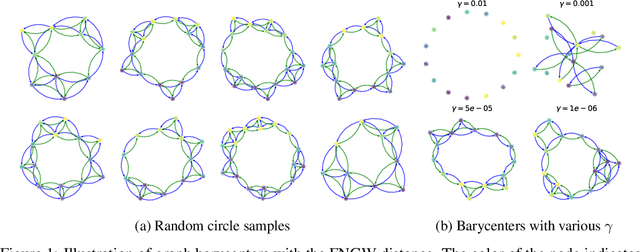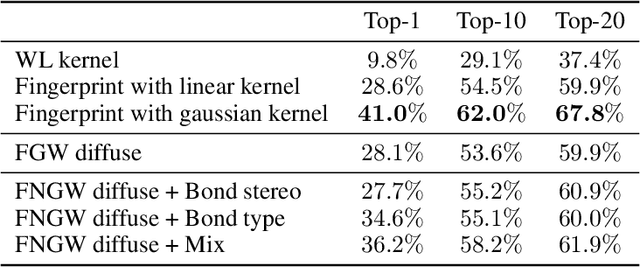Exploiting Edge Features in Graphs with Fused Network Gromov-Wasserstein Distance
Paper and Code
Sep 28, 2023



Pairwise comparison of graphs is key to many applications in Machine learning ranging from clustering, kernel-based classification/regression and more recently supervised graph prediction. Distances between graphs usually rely on informative representations of these structured objects such as bag of substructures or other graph embeddings. A recently popular solution consists in representing graphs as metric measure spaces, allowing to successfully leverage Optimal Transport, which provides meaningful distances allowing to compare them: the Gromov-Wasserstein distances. However, this family of distances overlooks edge attributes, which are essential for many structured objects. In this work, we introduce an extension of Gromov-Wasserstein distance for comparing graphs whose both nodes and edges have features. We propose novel algorithms for distance and barycenter computation. We empirically show the effectiveness of the novel distance in learning tasks where graphs occur in either input space or output space, such as classification and graph prediction.
 Add to Chrome
Add to Chrome Add to Firefox
Add to Firefox Add to Edge
Add to Edge